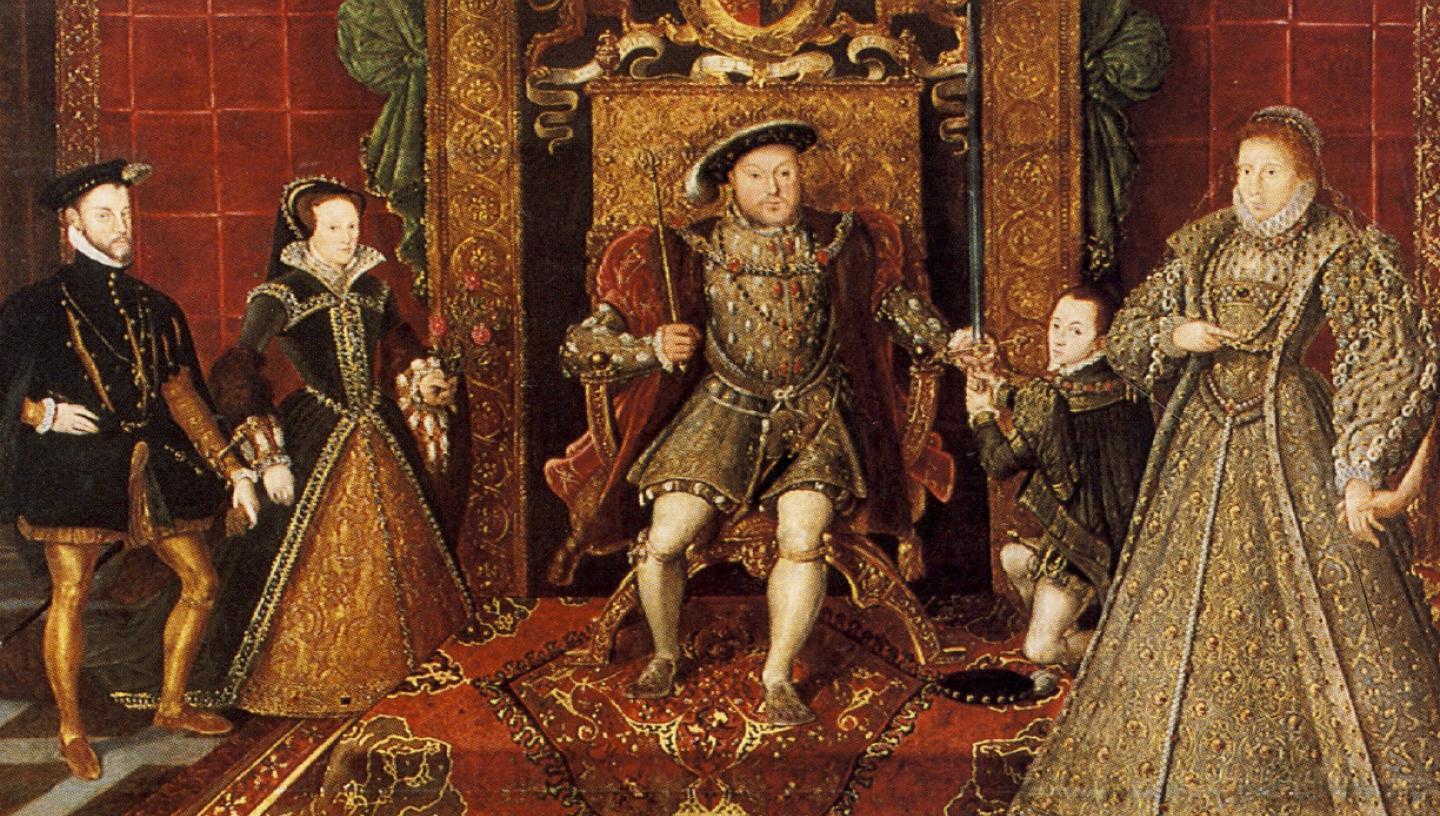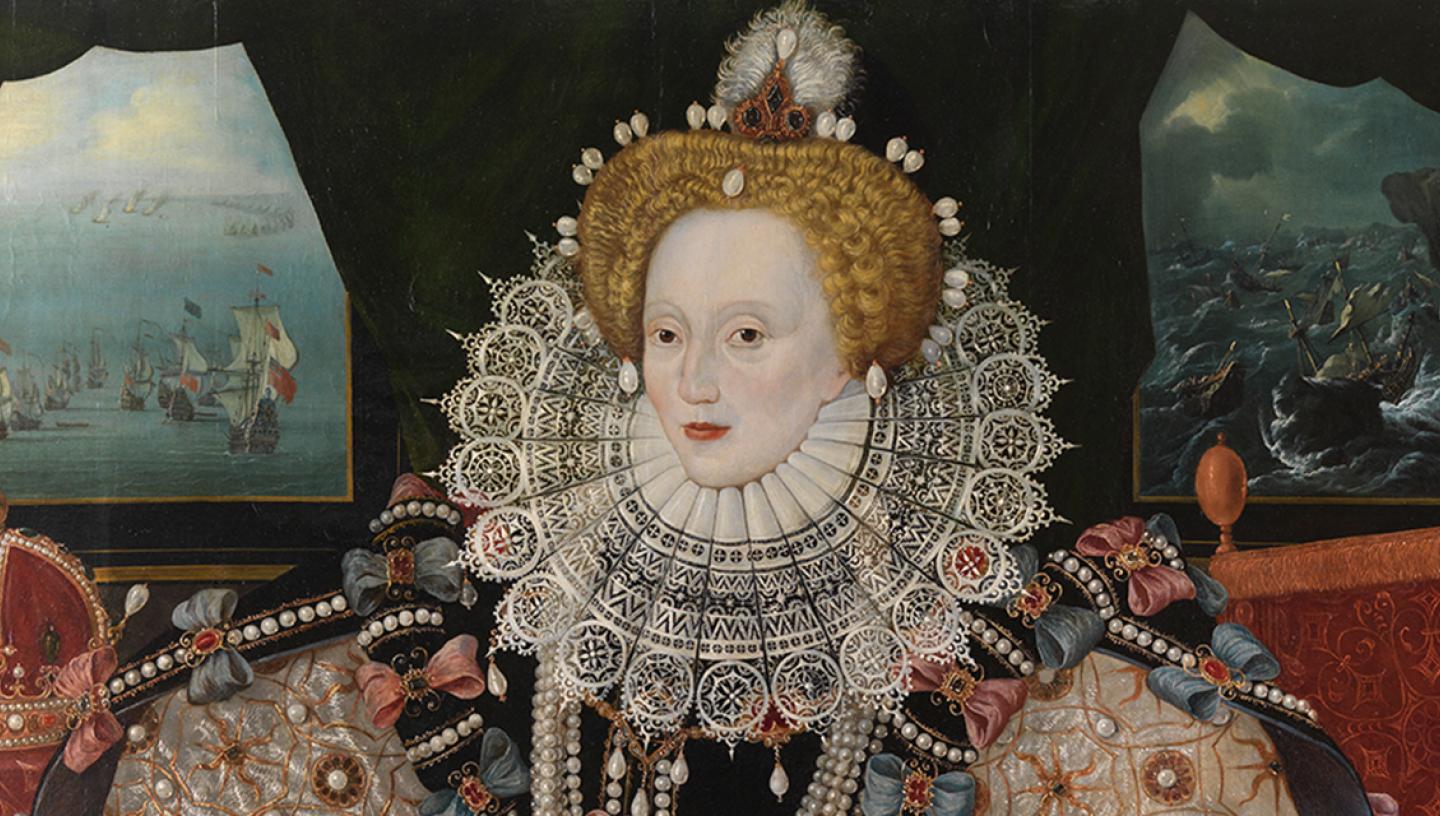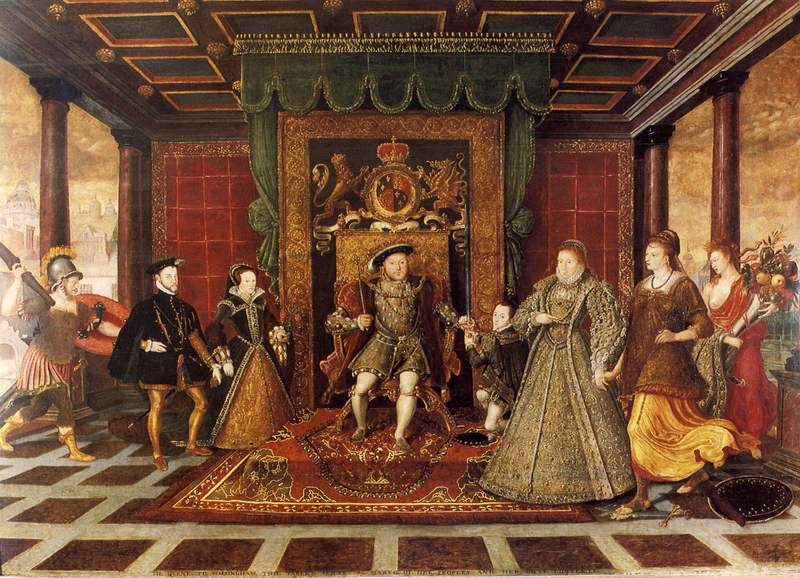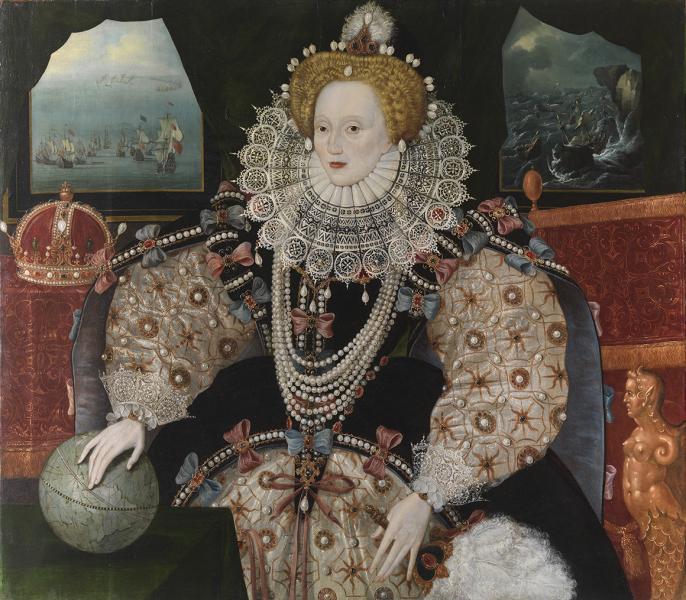
The Tudor dynasty was founded in 1485 by Elizabeth's grandfather, Henry VII, when he emerged victorious after the dynastic Wars of the Roses.
Henry VII
The rival Houses of Lancaster and York were united in 1486 by the marriage of the Lancastrian Henry VII (Elizabeth I's grandfather) to Elizabeth of York, which brought much-needed stability to England after the Wars of the Roses. Thus began the start of the Tudor dynasty. However, the Tudor era would be coloured by rebellions, conspiracies, challenges to the succession and fear of further civil war.
Henry VIII, Catherine of Aragon and Anne Boleyn
Elizabeth’s half-sister Mary, was born in 1516 to Henry's first wife, Catherine of Aragon.
After 20 years of marriage and no son, Henry had grown tired of Catherine and fallen in love with Anne Boleyn.
When the Pope refused to end his first marriage, Henry severed ties with the Catholic Church in Rome. He set himself up as the head of the Church in England. In 1533, the marriage of Henry and Catherine was declared invalid, Mary was declared illegitimate and Anne was crowned Queen.
Elizabeth is born
Elizabeth Tudor was born at Greenwich Palace on 7 September 1533 to Henry VIII and his second wife, Anne Boleyn. Both parents were so confident the child would be a male heir, a document was prepared announcing the arrival of a new prince. When Elizabeth was born, an 's' was quickly added to the word 'prince'.
A male heir is born
By 1536, Catherine of Aragon had died, Anne Boleyn had still not produced a male heir and Henry was in love with Jane Seymour. Soon after, Anne was convicted of treason on trumped-up charges of multiple adultery, including incest with her brother. She was disgraced, divorced and beheaded at the Tower of London. Like Mary, Elizabeth was declared illegitimate and removed from the line of succession.
Shortly after the execution of Anne Boleyn, Henry married Jane Seymour who gave birth to Prince Edward in 1537, the long-awaited son. Jane died shortly afterwards. Three more wives followed, but no more children.
Elizabeth's early years
Henry's children were brought up together in various royal houses just outside London. Elizabeth was highly intelligent and received an excellent humanist education from some of the leading scholars of the day from St John's College, Cambridge.
Although Mary remained a devout Catholic, Elizabeth and Edward were influenced by the Protestant views of their tutors and their last stepmother, Katherine Parr, who married Henry in 1543.
Reinstated in the line of succession
Katherine Parr, Henry's sixth and final wife, took a great interest in her stepchildren and made an effort to become close to them. Henry too began to take a greater interest in his daughters. In 1544, he had Mary and Elizabeth reinstated in the line of succession, after Edward, by an Act of Parliament.
The Portrait of Elizabeth I when Princess (c. 1546), is the earliest existing solo portrait of Elizabeth as a young woman. Elizabeth's rehabilitation as her 'father's daughter' is made clear by the Latin inscription in the top left which reads 'Elizabeth, daughter of the king of England'. It is thought the portrait was painted for Henry since the 13-year old Elizabeth is portrayed as the ideal princess: scholarly, regal and dignified.
Henry died the following year in 1547, and was succeeded by nine-year old Edward, with his uncle Edward Seymour, as Lord Protector. Edward died aged 15, and was succeeded by his sister Mary.
The Armada Portrait
Saved for the nation, the Armada Portrait commemorates the most famous conflict of Elizabeth I's reign – the failed invasion of England by the Spanish Armada in summer 1588. This iconic portrait is on public display in the Queen's House after careful conservation.


